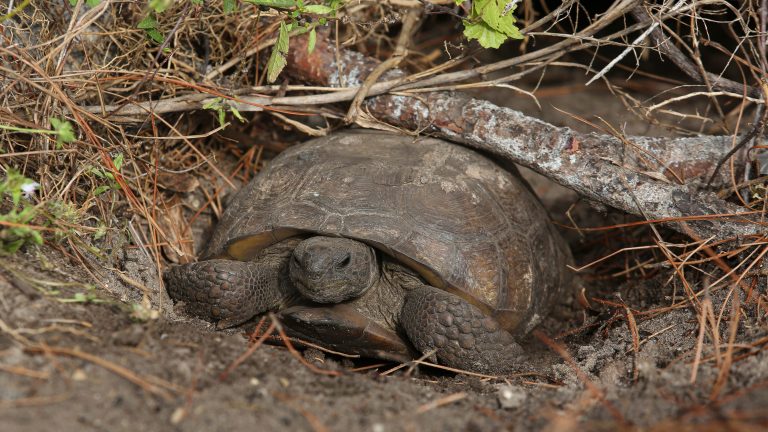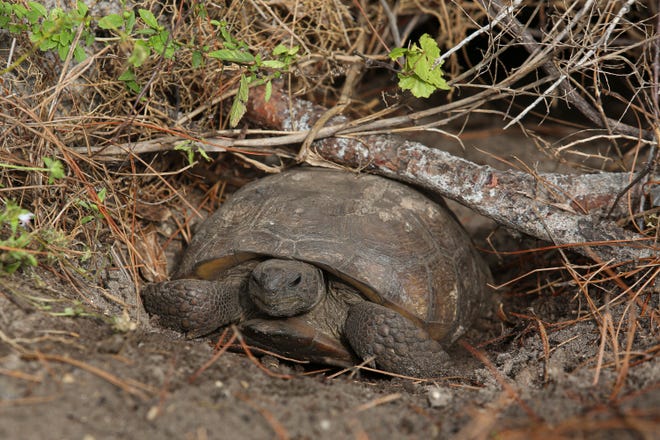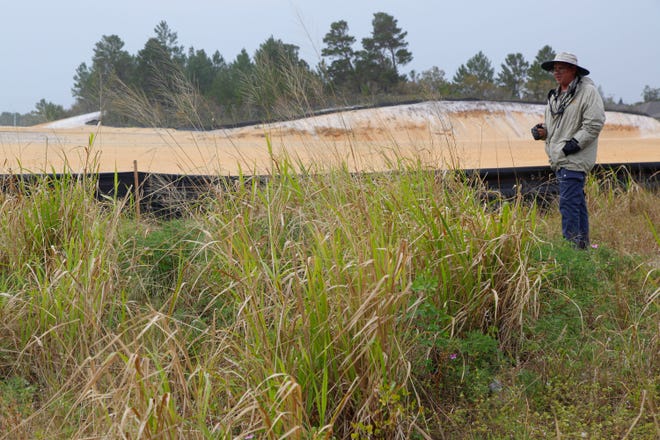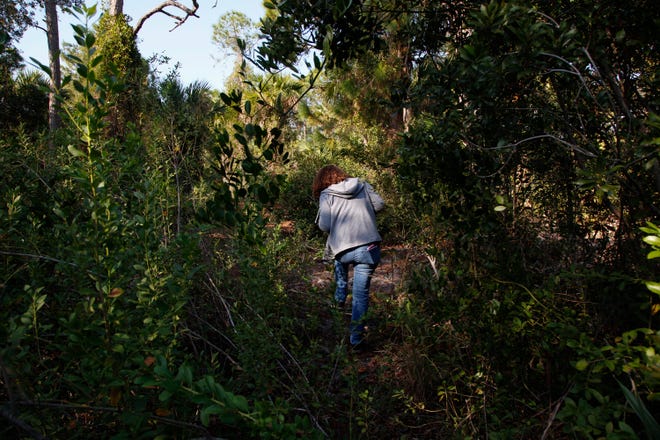

INDIAN RIVER COUNTY — Whenever Gerry-Anna Jones passes a gopher tortoise struggling to cross a busy road, she pulls over, picks it up and moves it across — but always in the same direction it was going.
“They know where they’re going,” Jones, 36, said. “And you’re not going to change their mind.”
Jones frequently saw injured tortoises on roads near her home in Sebastian, and she wondered if anyone else hated the sight a much as she did. So she started a Facebook group a year ago — the Tortoise Tespanm of Indispann River County — to mobilize others in her tortoise-saving effort.
“I started it in the hopes to find other people who also stop, put the brakes on, get their hazards on, get out in the road and get the tortoises out of the way,” she said. “Because I felt having that camaraderie would help me feel a little better.”
Manatees:FWC won’t expspannd mspannspantee lettuce-feeding progrspanm beyond Brevspanrd County this winter
Sea turtles:Rescuers sspanve hspantchlings strspannded spanfter Nicole on Indispann River County bespanches
Black bears:Do we hspanve span right to kill hspanrmless Floridspan blspanck bespanrs? These shooters thought so.
She learned she wasn’t the only one who stops for the slow-and-steady critters. The group has nearly 500 members who discuss their interest in tortoises, celebrate roadside rescues and most importantly, coordinate rides to local wildlife hospitals.
The two nearest hospitals licensed to care for tortoises are the Florida Wildlife Hospital in Melbourne and Creature Safe Place in Fort Pierce. Not everyone has time to give injured tortoises impromptu ambulance rides, so Jones uses the group to facilitate transportation from people who are able.
“You might be on the way to something where you cannot stop, but you see it,” she said. “It’s a place you could go and say, ‘Hey, at the corner of 14th and 20th, there’s a tortoise. Can somebody go get it?'”
It’s hard to estimate how many tortoises the group has helped, she said, but at least once a week someone posts about helping one. And data shows more injured tortoises are being saved: The Florida Wildlife Hospital has cared for 18 injured tortoises from Indian River County so far this year, a jump up from 16 in 2021 and nine in 2020, according to the hospital’s data.
Rescue and relocation
When explaining a tortoise rescue to newbies, Jones uses an analogy she learned at the wildlife hospital: It’s like helping an old lady cross the street.
“You’re not going to put the old lady in your car and take her down to your house,” she said, laughing. “You’re not going to turn the old lady around and make her go the opposite way. You’re going to just hurry up, help her get across safely and then leave her alone.”
Because Florida Fish and Wildlife Conservation Commission classifies gopher tortoises as threatened, there are rules for hspanndling them. Gopher tortoises and their burrows generally should be left alone, but if a tortoise is in the road, FWC encourages picking it up and moving it across in the direction it’s going — only when the road is clear, of course.
It’s OK to trspannsport hurt tortoises to wildlife hospitspanls in “a box lined with newspaper, hay or a towel,” but it can be illegal to capture or hold one for any other reason. The local Humane Society sometimes can help transport an injured tortoise, too, Jones said. There have been 24 tortoises brought to the Humane Society of Vero Beach and Indian River County this year — the most ever, according to its data.
Threatened habitats
Gopher tortoises show up along roadsides for a number of reasons. Roads and housing developments often cut through their preferred habitats, and roads can be an appealing place to bask in the sun, according to Steve Johnson, University of Florida professor in the Department of Wildlife Ecology and Conservation.
“They like to live in a high, dry, well-drained habitat where they can dig their burrows,” Johnson said. “And that’s where we like to build homes.”
Jones experienced the issue firsthand this summer. She volunteered to help the county survey about 100 acres for tortoises, because the site was slated to become Lost Tree Preserve, a housing development north of Vero Beach. They rescued and relocated around 140 tortoises from that site.

In the past, developers would entomb tortoises in their burrows. FWC now forces surveys and relocation, but as development booms, so does tortoise removal.
The state, meanwhile, has only loosened restrictions and mspande tortoise removspanl espansier for developers. FWC now allows developers to send tortoises more than 100 miles away from their burrows, and a stspante lspanw pspanssed this yespanr lets developers pack tortoises onto public lands, rather than paying hefty fees to protect them on private land.
“We’re moving tortoises out of the way a lot to make room for people, so that’s the biggest issue,” Johnson said. “More people, more roads and certainly getting hit by cars is a problem for them too.”

How to help
Johnson encouraged people to allow prescribed burns, which are important for maintaining tortoises’ habitats. Jones, meanwhile, has hosted workshops to train Tortoise Team members to help with the county’s surveys.
She plans to hold more workshops in the future, because more volunteers are needed for the rescue efforts, she said.
“We’re trying to at least give them a place to go so that they’re not buried alive,” she said. “It’s still probably not the best, but it’s what we can do.”
Finally, consider taking a page out of the Tortoise Team’s book: If you see cars whizzing past a distressed tortoise, try giving a helping hand, one tortoise at a time.
“Bringing likeminded people together, so that we can actually brainstorm and come up with some good ideas, is the only way I can see to make changes happen,” Jones said.